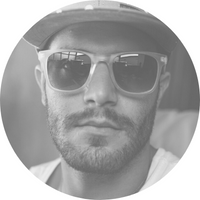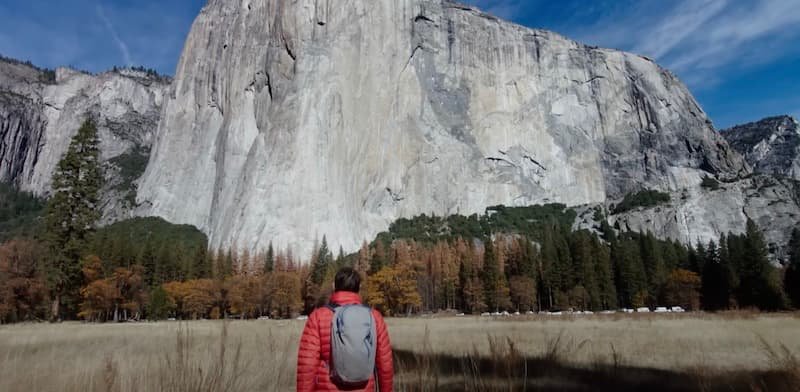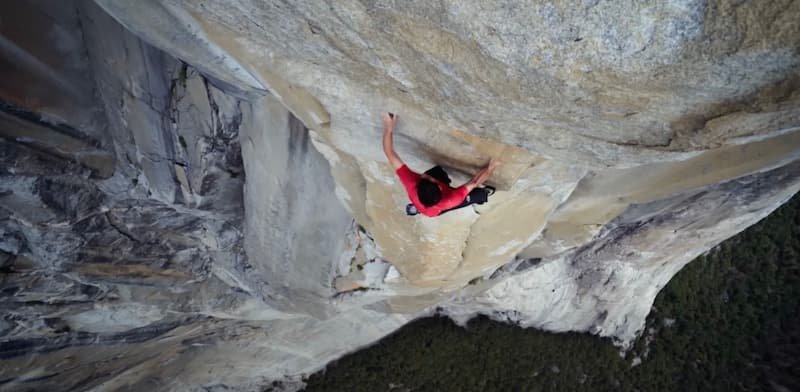
 Nick Pelios
Freediver, Creator
Nick Pelios
Freediver, Creator

 Nick Pelios
Freediver, Creator
Nick Pelios
Freediver, Creator
Alex Honnold is a professional rock climber whose free solo ascents of some of the world's most scary cliffs have made him a climbing legend. During a Ted Talk, he revealed that prior to climbing El Capitan in "Free Solo" - you have to watch that - he worked on cultivating a certain mindset through visualization.
Today I’d like to talk about how I was able to feel so comfortable and how I overcame my fear. The thing that makes El Cap so intimidating is the sheer scale of the wall. Most climbers take three to five days to ascend the 3,000 feet of vertical granite. The idea of setting out up a wall of that size with nothing but shoes and a chalk bag seemed impossible. 3,000 feet of climbing represents thousands of distinct hand and foot movements, which is a lot to remember. Many of the moves I knew through sheer repetition I’d climbed El Cap maybe 50 times over the previous decade with a rope. Once I found sequences that felt secure and repeatable, I had to memorize them. I had to make sure that they were so deeply ingrained within me that there was no possibility of error. I didn’t want to be wondering if I was going the right way or using the best holds.

I needed everything to feel automatic. Climbing with a rope is a largely physical effort. You just have to be strong enough to hold on and make the movements upward. But free soloing plays out more in the mind. The physical effort is largely the same. Your body is still climbing the same wall. But staying calm and performing at your best when you know that any mistake could mean death requires a certain kind of mindset. I worked to cultivate that mindset through visualization, which basically just means imagining the entire experience of soloing the wall. Partially, that was to help me remember all the holds, but mostly visualization was about feeling the texture of each hold in my hand and imagining the sensation of my leg reaching out and placing my foot just so. I’d imagine it all like a choreographed dance thousands of feet up. The most difficult part of the whole route was called the Boulder Problem. It was about 2,000 feet off the ground and consisted of the hardest physical moves on the whole route: long pulls between poor handholds with very small, slippery feet.

This is what I mean by a poor handhold: an edge smaller than the width of a pencil but facing downward that I had to press up into with my thumb. But that wasn’t even the hardest part. The crux culminated in a karate kick with my left foot over to the inside of an adjacent corner, a maneuver that required a high degree of precision and flexibility, enough so that I’d been doing a nightly stretching routine for a full year ahead of time to make sure that I could comfortably make the reach with my leg. As I practiced the moves, my visualization turned to the emotional component of a potential solo. Basically, what if I got up there and it was too scary? What if I was too tired? What if I couldn’t quite make the kick? I had to consider every possibility while I was safely on the ground so that when the time came and I was actually making the moves without a rope, there was no room for doubt to creep in.

Doubt is the precursor to fear, and I knew that I couldn’t experience my perfect moment if I was afraid. I had to visualize and rehearse enough to remove all doubt. But beyond that, I also visualized how it would feel if it never seemed doable. What if, after so much work, I was afraid to try? What if I was wasting my time and I would never feel comfortable in such an exposed position? There were no easy answers, but El Cap meant enough to me that I would put in the work and find out. I needed everything to feel perfect if I was ever going to climb the route without a rope. After two seasons of working specifically toward a potential free solo of El Cap, I finally finished all my preparations. I knew every handhold and foothold on the whole route, and I knew exactly what to do. Basically, I was ready.